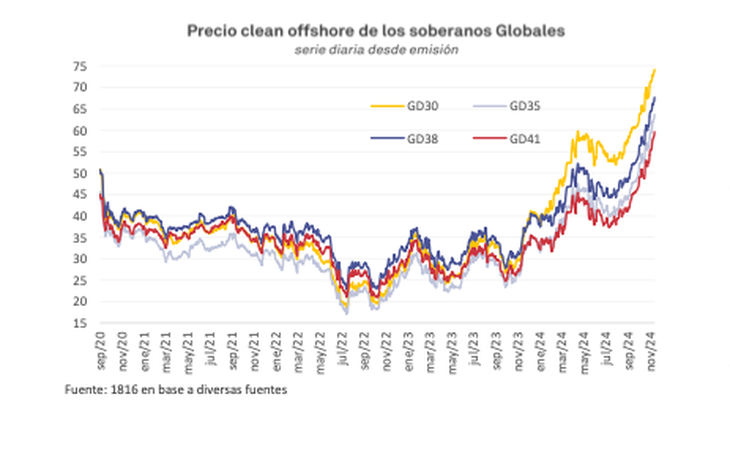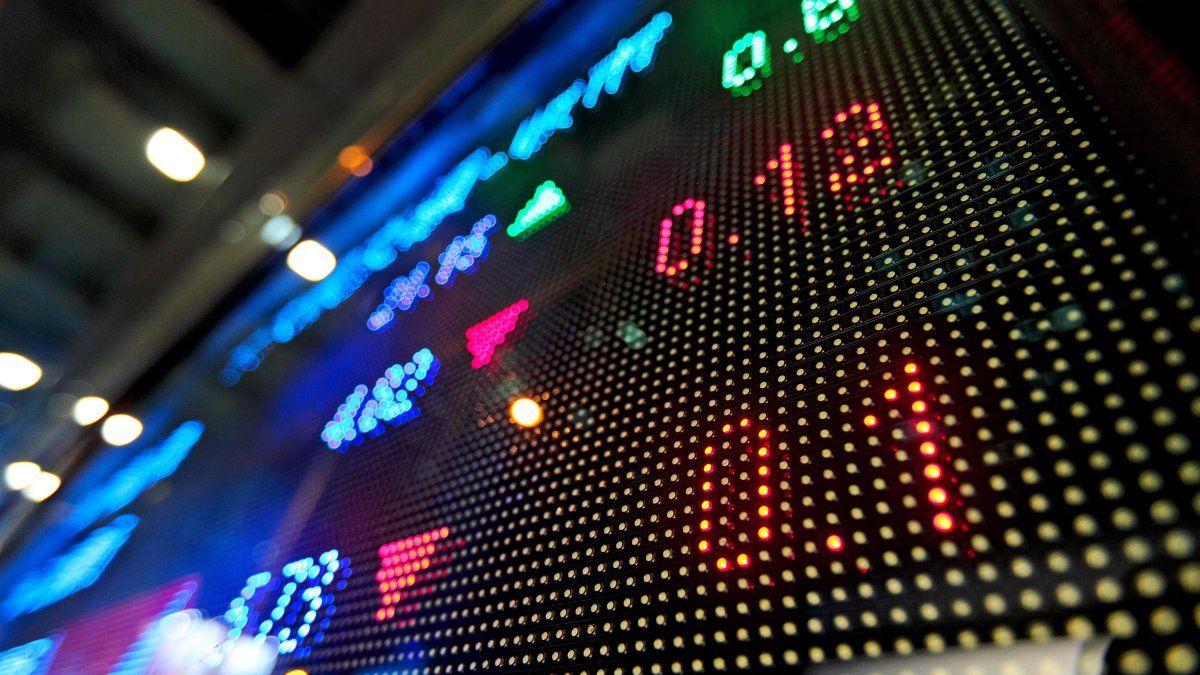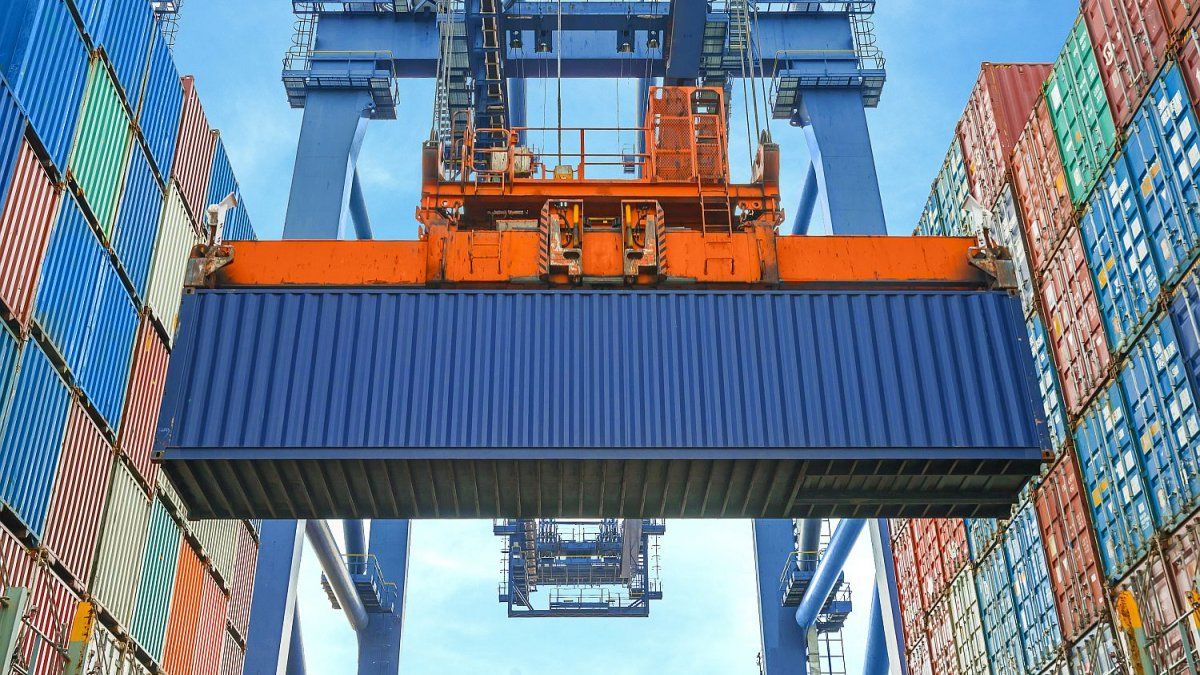Thus, and unlike other emerging bonds, Argentine debt maintains solid performance thanks to its good local fundamentals, such as the current and fiscal account surplus. Furthermore, the reclassification of Fitch Ratings, which went from CC to CCC, reinforces confidence in bonds, with room for further increases from a macroeconomic perspective.
Bonds in dollars: what the city analyzes
The global curve is flat, with an Internal Rate of Return (IRR) of 10%, due to improvements in repayment prospects for next year, as IEB points out. “If we go towards a flat curve at 9%, which would imply a country risk of 500 bp, if the current yield of the 10-year treasury (US Treasury bonds) is taken into account, the debt has upside”, they explain.
In that context, Juan Pedro Mazzastrategist Cohenhe says in dialogue with Scope that, with the Argentine country risk close to 700 bp, the sovereign debt seems to approach its natural ceiling. And the thing is that, on the one hand, this level is very close to the 600 bp that it averaged during the Macri administration, when there was no exchange rate and net reserves were positive. “On the other hand, these values are similar to those of other comparable emerging economies, such as Pakistan (690 bp), Angola (664 bp) or Nigeria (550 bp)”.
And he adds that, although the firm he represents maintains an optimistic view of the Argentine debt, “We cannot ignore that current levels are extremely attractive to take profits.”. In this context, Mazza prefers to opt for dollarized instruments with low correlation to sovereign risk, such as Negotiable Obligations (ONs) or Cedears.
IEB.png
Second DerdoyResearch Analyst of Inviuqualifies with Mazza and indicates that, although he maintains a constructive vision in the medium and long term on the bonars and globalsand considers that they could still have room to extend the increase. He doesn’t think to takesome profit is bad“, in particular “for those investors who took advantage of the majority of the increase registered so far.”
And as you well analyze, in recent weeks, profit taking was observed, with a particular focus on lower risk dollarized assets, such as Bopreales and Negotiable Obligationsin an effort to reduce exposure to risk and volatility within the portfolios. In this context, Derdoy finds attractive the Bopreales BPY26 and BPC7D, “which currently offer returns of 8.24% and 11.10%, respectively.”
The history of defaults and the temptation to sell
Alejandro Bianchifounder of investmentconsultant.comhas another look at rotating into other assets or taking profits at this time. He says that Argentina’s complex history of defaults leads one to think that, after a big rally like the recent one, it might be time to take profits.
However, he maintains that, when analyzing the fundamentals, “it is worth questioning where in the world is a dollar bond backed by a government with a willingness to pay, that follows sound economic policies, has a fiscal surplus, and whose economy is projected to grow by 5% according to the IMF or 8.5% according to JP Morgan.”
The analyst adds that the debt in relation to the Gross Domestic Product (GDP) is 91%, with expectations of dropping to 60% in the future. Public spending, which went from representing 42.5% of GDP to 32%, is already lower than the average for emerging countries (32.65%). “All this, added to IRRs of 15% on short bonds, whose price is recovered through coupons and redemptions within the mandate of the current administration, makes it difficult to justify the sale. When thinking about these arguments, the desire to sell fades”, he concludes.
Bonds: the strategy to follow
That said, analysts are divided on what to do with sovereign debt right now. What we must understand is that this phenomenon in which bonds were traded as if they were variable income assets is about to come to an end. A characteristic of a more stable market.
Finally, the economist Deborah Mollonremember that, although having the country risk at these levels is a good sign for both the country and the market, one should not lose sight of the time horizon of the investment and the level of risk that each one is willing to assume. . “Some investors prefer to avoid constant rotation between assets and simply value a more stable market,” he says.
Globals 1816.png

Remember that, in recent months, global bonds and bonars showed outstanding performance, which could lead those who entered just to take advantage of that rise to seek new horizons. Mollon, in particular, likes the Bopreales. AND, “regarding CER bonds, which are an attractive alternative to place pesos“He likes the middle section of the curve, which looks the most promising.
Finally, from IEB, they confirm the value in the long section of the sovereign curve, particularly in the Global 2035 (GD35)which – if everything goes well – will allow capturing greater appreciation potential compared to those of shorter duration. And, for those looking for more conservative alternatives, he recommends Bopreales series 1, which offer the option of being used to pay taxes. These include series 1A, 1B and 1C, which present attractive yields, in line with what Mollon proposed.
Source: Ambito
I am an author and journalist who has worked in the entertainment industry for over a decade. I currently work as a news editor at a major news website, and my focus is on covering the latest trends in entertainment. I also write occasional pieces for other outlets, and have authored two books about the entertainment industry.




